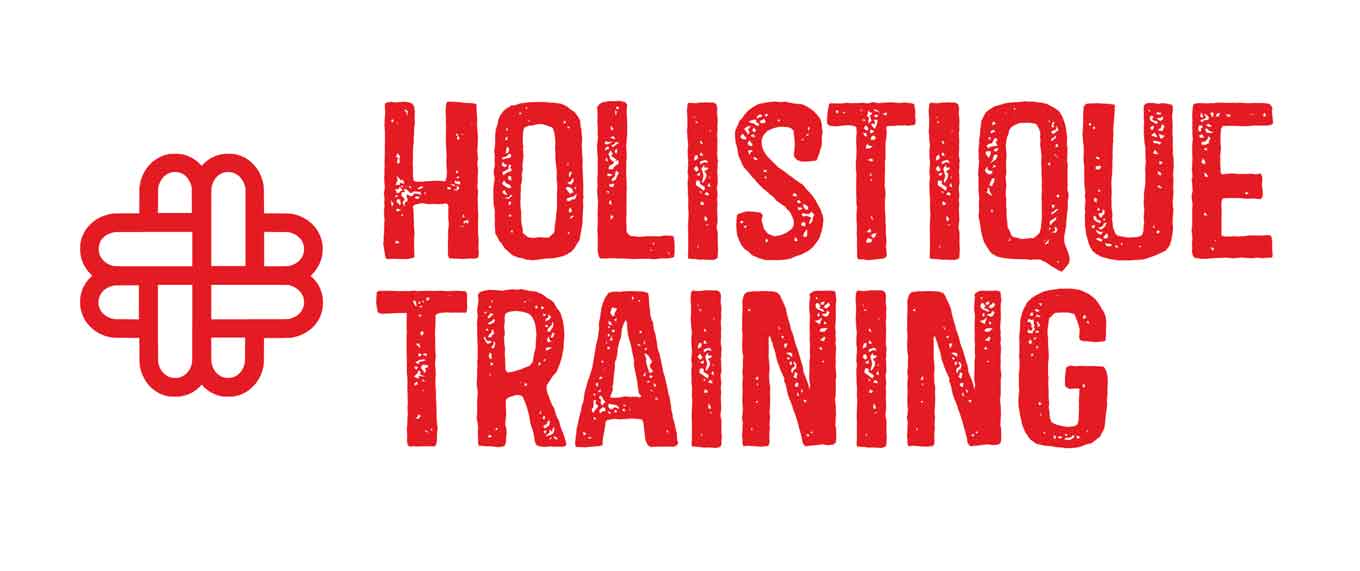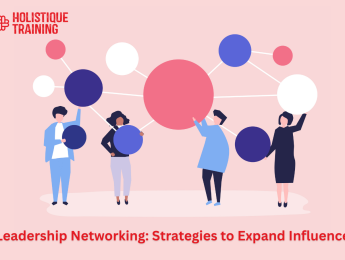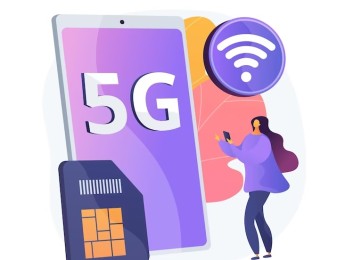- Table of Contents
- 1. Introduction
- 2. The Foundations of Leadership Networking
- Casual vs. Leadership Networking
- Authenticity
- Reciprocity
- Shared Value
- The Psychology of Influence
- 3. The Strategic Value of Networking for Leaders
- Decision-Making and Problem-Solving
- Building Alliances
- Networking as an Innovation Driver
- Case Study: Satya Nadella
- 4. Types of Leadership Networks
- Operational Networks
- Personal Networks
- Strategic Networks
- Balancing Across the Three
- 5. Building a High-Impact Network
- Quality Over Quantity
- Approaching Senior Leaders
- Events and Digital Platforms
- Network Mapping
- 6. Digital Age Leadership Networking
- Leveraging LinkedIn
- Online Communities and Virtual Events
- Personal Branding
- Pitfalls of Digital Networking
- 7. Expanding Influence Through Networking
- Multiplying Visibility and Credibility
- The Ripple Effect
- Storytelling and Thought Leadership
- Building Trust Over Time
- 8. Cross-Cultural and Global Networking
- Cultural Intelligence (CQ)
- Navigating Norms
- Case Studies of Cross-Border Alliances
- Virtual Networking in Multicultural Settings
- 9. Gender, Diversity, and Inclusive Networking
- Challenges
- Inclusive Networks
- Sponsorship and Mentorship
- Research Insights
- 10. Challenges and Ethical Considerations in Networking
- Avoiding Exploitation
- Conflicts of Interest
- Balancing Authenticity and Strategy
- Ethical Dilemmas
- 11. Practical Strategies and Tools for Leaders
- Scheduling Time
- The Give–Ask–Thank Model
- Networking at Scale
- Leveraging AI and Digital Tools
- 12. Case Studies & Research Insights (≈300 words)
- Research Evidence
- Success Stories
- Failures from Weak Networks
- 13. Future of Leadership Networking
- AI and Remote Work
- The Gig Economy
- Adaptability and Digital Literacy
- Networking as a Core Competency
- 14. Conclusion
1. Introduction
Leadership networking is often misunderstood as a series of polite conversations, business card exchanges, or socialising at events. In reality, true leadership networking goes far beyond small talk. It is the purposeful building of value-driven relationships that help leaders achieve not only their personal ambitions but also the wider goals of their organisations and communities. Unlike ordinary networking, leadership networking is intentional, strategic, and anchored in authenticity. It focuses on creating mutual value, facilitating knowledge exchange, and strengthening influence.
In today’s interconnected world, the ability to navigate networks is more crucial than ever. Technology has collapsed geographical boundaries, bringing professionals together across industries and continents. At the same time, challenges such as globalisation, technological disruption, and shifting workplace norms require leaders to collaborate more effectively. Leaders who master the art of networking are better equipped to anticipate trends, mobilise resources, and inspire trust among diverse stakeholders. Those who fail to engage strategically risk isolation, limited perspectives, and missed opportunities.
The benefits of leadership networking are substantial. First, visibility: leaders become more recognised and respected within their fields. Second, influence: well-connected leaders are able to shape conversations and mobilise support more effectively. Third, career growth: opportunities such as board invitations, speaking engagements, and cross-sector partnerships often arise from networks rather than job boards. Finally, organisational impact: leaders with strong networks are better positioned to drive innovation, attract talent, and navigate crises.
This article explores the concept of leadership networking in depth. From its foundations and strategic value, to building high-impact networks, navigating cultural and digital spaces, and addressing ethical challenges, we will examine how leaders can expand their influence responsibly. Supported by research, practical strategies, and real-world examples, the discussion will provide a roadmap for leaders who want to develop networks that go beyond personal gain and contribute to collective progress.
2. The Foundations of Leadership Networking
Casual vs. Leadership Networking
Casual networking tends to focus on surface-level connections, often driven by short-term gain. Leadership networking, by contrast, is purposeful. It is about cultivating relationships that are rooted in trust, shared value, and long-term collaboration. Leaders network to create ecosystems of support, influence, and knowledge that benefit both themselves and others.
Authenticity
Authenticity is the cornerstone of meaningful networking. Leaders who approach relationships with sincerity are more likely to build trust and credibility. Pretence or opportunism, on the other hand, quickly erodes confidence. Authentic networking requires self-awareness, honesty about one’s strengths and weaknesses, and the ability to listen actively.
Reciprocity
Networking is not a one-way street. Reciprocity ensures that leaders contribute value to their networks as much as they benefit from them. This could mean offering introductions, sharing insights, or providing mentorship. Leaders who adopt a “give first” mindset create goodwill, which often results in greater returns over time.
Shared Value
Successful networks thrive on shared value. Leaders must identify common goals, whether they involve innovation, social impact, or career advancement. When relationships are anchored in mutual benefit, they become more resilient and impactful. Shared value transforms connections into collaborations.
The Psychology of Influence
Robert Cialdini’s six principles of influence—reciprocity, commitment, social proof, authority, liking, and scarcity—apply directly to leadership networking. For example, reciprocity builds obligation, while authority enhances credibility. Understanding these psychological triggers helps leaders navigate interactions more effectively without resorting to manipulation.
3. The Strategic Value of Networking for Leaders
Networking is far more than an optional leadership skill; it is a strategic asset that shapes a leader’s ability to influence outcomes. Leaders who understand and leverage their networks can make better decisions, solve complex problems, and fuel innovation.
Decision-Making and Problem-Solving
A strong network exposes leaders to a variety of perspectives, helping them evaluate options with greater depth. Access to diverse voices minimises blind spots and improves the quality of decisions, especially in uncertain or high-stakes environments.
Building Alliances
Strategic networking also allows leaders to forge alliances that align with organisational goals. Whether it is securing resources for expansion, collaborating on advocacy campaigns, or managing crises, networks serve as powerful platforms for collective action.
Networking as an Innovation Driver
Innovation thrives when leaders connect across industries. Exposure to new practices, emerging technologies, and unconventional thinking fuels creativity and enables leaders to introduce transformative solutions within their organisations.
Case Study: Satya Nadella
Satya Nadella , CEO of Microsoft, exemplifies the power of leadership networking. By cultivating relationships across technology, academia, and government, he repositioned Microsoft as a collaborative, cloud-driven company. His engagement with external stakeholders not only accelerated innovation but also helped restore Microsoft’s reputation on a global scale.
4. Types of Leadership Networks
Leadership networks are not one-size-fits-all. They take different forms, each serving a distinct purpose in a leader’s growth and impact.
Operational Networks
Operational networks focus on internal relationships within an organisation. These include colleagues, supervisors, and cross-functional teams. They are critical for ensuring efficiency and completing immediate tasks. Leaders who maintain strong operational ties are better equipped to mobilise resources and deliver consistent results.
Personal Networks
Personal networks extend beyond the workplace and include mentors, peers, and alumni. They play an essential role in providing perspective, advice, and emotional support. For many leaders, personal networks are the foundation for career development and resilience in the face of challenges.
Strategic Networks
Strategic networks go even further, reaching across industries, governments, and thought leadership circles. These connections give leaders access to fresh opportunities, policy insights, and market intelligence, enabling them to influence at scale.
Balancing Across the Three
Successful leaders do not rely exclusively on one type of network. Over-dependence on operational ties, for example, may limit broader perspectives, while excessive focus on strategic networks may weaken day-to-day effectiveness. A balanced portfolio across operational, personal, and strategic networks ensures both organisational success and long-term leadership growth.
5. Building a High-Impact Network
Quality Over Quantity
An effective network is built on meaningful relationships, not sheer numbers. Leaders should prioritise depth, ensuring each connection is rooted in mutual value and respect.
Approaching Senior Leaders
Reaching out to senior professionals requires confidence and preparation. Leaders should approach with a value-driven mindset—offering insights or collaboration opportunities—rather than focusing on personal gain.
Events and Digital Platforms
Conferences, summits, and online forums remain excellent opportunities to grow networks strategically. Leaders who attend with clear objectives and follow up meaningfully can turn fleeting encounters into lasting connections.
Network Mapping
Creating a network map helps leaders visualise their connections and identify gaps. A leader may realise, for instance, that while they have robust operational ties, they lack cross-industry alliances. Mapping allows for intentional and targeted expansion.
6. Digital Age Leadership Networking
Leveraging LinkedIn
LinkedIn has become a vital tool for leaders to share insights, engage in industry discussions, and connect with global peers. Thoughtful participation elevates credibility and influence.
Online Communities and Virtual Events
Virtual platforms and communities have erased geographical boundaries. Webinars, online forums, and digital roundtables give leaders opportunities to learn, share, and build reputations across cultures and industries.
Personal Branding
A leader’s online presence must reflect consistency between their values and professional expertise. Posting authentic, relevant content establishes trust and reinforces credibility.
Pitfalls of Digital Networking
Despite its potential, digital networking carries risks. Superficial connections or echo chambers can undermine the quality of engagement. Leaders must balance digital interactions with meaningful offline relationships to ensure substance.
7. Expanding Influence Through Networking
Multiplying Visibility and Credibility
Networks act as amplifiers, extending a leader’s presence and authority beyond their immediate circle. Visibility leads to credibility, which in turn enhances influence.
The Ripple Effect
Connections extend influence through second- and third-degree contacts. A single meaningful connection can multiply into opportunities through wider networks.
Storytelling and Thought Leadership
Sharing authentic stories through speeches, articles, or social platforms reinforces a leader’s authority and attracts like-minded collaborators.
Building Trust Over Time
Sustainable influence is not built overnight. Leaders must demonstrate consistency, integrity, and ethical behaviour to strengthen trust across their networks.
8. Cross-Cultural and Global Networking
Cultural Intelligence (CQ)
Cultural intelligence is indispensable for global leaders. It enables them to respect and adapt to diverse values and practices, which is crucial in international collaboration.
Navigating Norms
Cultural norms vary widely. For example, direct communication may be valued in the West, while indirect approaches are more effective in Asia. Leaders must adapt to avoid misunderstandings.
Case Studies of Cross-Border Alliances
Global research collaborations and multinational partnerships demonstrate how sensitivity to cultural nuances can drive success. Leaders who embrace diversity often achieve stronger alliances.
Virtual Networking in Multicultural Settings
Digital platforms provide new opportunities for multicultural engagement. Leaders must combine adaptability with empathy to foster inclusivity in these virtual spaces.
9. Gender, Diversity, and Inclusive Networking
Challenges
Women and underrepresented groups often face barriers, such as exclusion from informal networks or bias in professional circles.
Inclusive Networks
Leaders who deliberately create diverse and inclusive networks break down silos and open doors for innovation.
Sponsorship and Mentorship
Beyond mentorship, sponsorship plays a key role. Senior leaders can actively endorse diverse talent, boosting visibility and opportunities.
Research Insights
Studies by McKinsey highlight that diverse networks foster more innovative outcomes, reinforcing the need for inclusivity in leadership networking.
10. Challenges and Ethical Considerations in Networking
Avoiding Exploitation
Networking should be built on mutual respect, not exploitation. Leaders must avoid treating relationships as purely transactional.
Conflicts of Interest
Overlap between personal, operational, and strategic networks may create conflicts. Leaders must handle such scenarios with transparency.
Balancing Authenticity and Strategy
While networking is strategic, authenticity must remain at its core. Leaders who compromise values for short-term gain risk credibility loss.
Ethical Dilemmas
Engagement in lobbying, advocacy, or political networking raises complex ethical challenges. Leaders must remain transparent and accountable.
11. Practical Strategies and Tools for Leaders
Scheduling Time
Networking should be embedded into leadership routines, not treated as an afterthought.
The Give–Ask–Thank Model
This simple framework helps leaders create reciprocal value: first offering help, then asking for support, and finally expressing gratitude.
Networking at Scale
Professional associations, alumni groups, and industry bodies allow leaders to expand influence efficiently and connect at scale.
Leveraging AI and Digital Tools
AI-driven platforms can suggest valuable contacts and provide insights into network gaps, making networking more strategic and efficient.
12. Case Studies & Research Insights
Research Evidence
Harvard Business Review studies show that executives with robust strategic networks are more likely to achieve promotions, drive innovation, and sustain long-term success.
Success Stories
Indra Nooyi , former CEO of PepsiCo, built a diverse network spanning business, academia, and NGOs. Her relationships allowed her to promote sustainability and corporate responsibility on a global stage.
Failures from Weak Networks
Leaders who neglect networking often face isolation during crises. Without allies, resources, or diverse perspectives, their ability to respond effectively diminishes.
13. Future of Leadership Networking
AI and Remote Work
Artificial intelligence will transform networking by automating introductions and recommending relevant contacts. Remote work also demands leaders to master digital collaboration.
The Gig Economy
With the rise of freelance and project-based work, leaders must adapt to building flexible, short-term networks that deliver quick impact.
Adaptability and Digital Literacy
The leaders of tomorrow will need continuous learning and digital fluency to remain relevant in rapidly changing ecosystems.
Networking as a Core Competency
Networking is no longer optional—it has become a central competency for effective leadership in the 21st century.
Table: Shifts in Leadership Networking
Dimension | Traditional Networking | Future Networking |
Geographic Scope | Local/Regional | Global/Virtual |
Tools Used | Face-to-face meetings | AI platforms, digital ecosystems |
Relationship Focus | Transactional | Value-driven, inclusive |
Network Composition | Homogeneous | Diverse, cross-sectoral |
Leadership Role | Passive connector | Active influencer & collaborator |
14. Conclusion
Leadership networking is more than a professional accessory; it is a mindset, skillset, and continuous journey. In an interconnected world, leaders who build purposeful networks are better positioned to expand influence, drive innovation, and create collective progress.
The process begins with authenticity, reciprocity, and shared value. By balancing operational, personal, and strategic networks, leaders can ensure both daily effectiveness and long-term growth. Digital tools and global collaboration further enrich these opportunities, but ethical considerations must always remain central.
The future of leadership networking will be shaped by AI, globalisation, and inclusive practices. Leaders who adapt with responsibility and integrity will thrive, not only for their own success but also for the advancement of their organisations and communities.

























